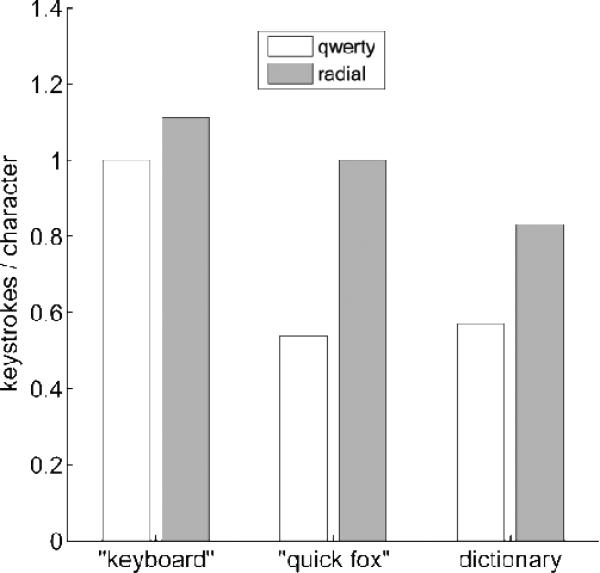Figure 5.
Keystrokes per character (KSPC). KSPC comparison between QWERTY and Radial Keyboards for the “keyboard” task, “quick fox” task, and typing the entire software dictionary (58,000+ words). KSPC is defined (on average) as the theoretical number of keystrokes needed to enter a single character of text, assuming 100 percent accuracy. Due to the extra keystroke needed to make word selections and the weaker prediction power inherit in ambiguous text prediction compared to the QWERTY keyboard, KSPC is lower for the QWERTY keyboard. For text entry interfaces, a lower KSPC is better. In the “keyboard” task, word completion was not used, so the KSPC for QWERTY = 1, while it is 1.1 for Radial, due to the extra keystroke needed to select the word “keyboard”. In the “quick fox” task, all of the words are very common, so the KSPC is well below 1 for QWERTY. It is at 1 for the Radial keyboard in the “quick fox” task, offsetting some of the extra required keystrokes by being able to select the words as soon as they appear in the word list, which often occurs before all characters have been typed.

